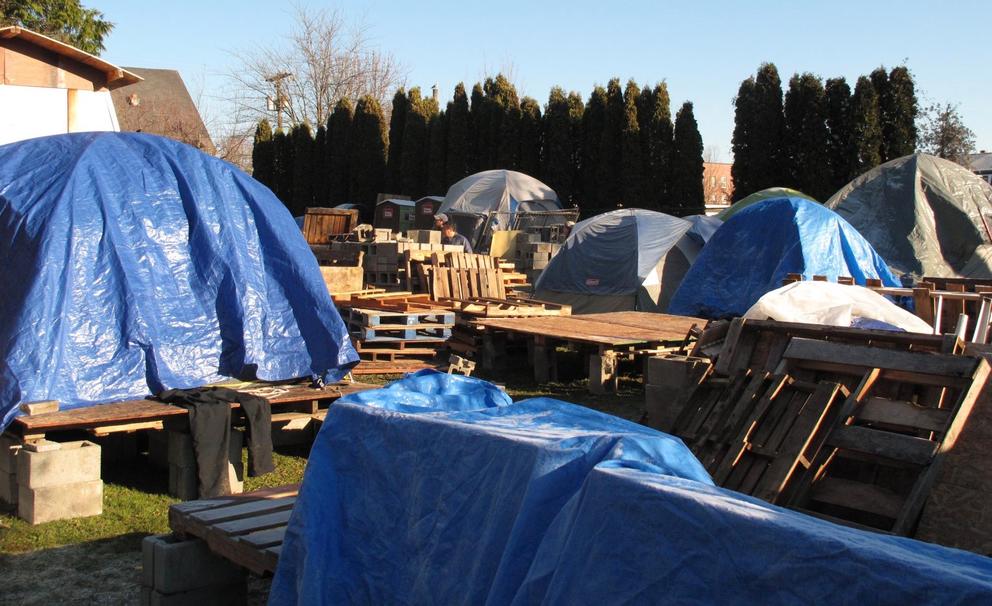Shutting down a homeless encampment undeniably feels like decisive action against the phenomenon of people living outdoors, and is therefore gratifying to some. But it is not an effective choice if the goal is actually reducing the number of people living outdoors. In the absence of real alternative accommodations for encampment residents, these closures are counter-productive flailing that do far more harm than good.
In the past several weeks, we’ve seen high-profile declarations from editorial writers and elected officials that it’s time to shut down the Beacon Hill greenbelt — often referred to as The Jungle — as a place where people live outdoors. Some of those questioning the advisability of homeless encampment “sweeps” have been derided as not caring about crime, or not caring about the conditions of people living in unregulated camps.
Whether people should be living outside in our city is not the relevant question. We already agree on the answer: We should not have people living on our sidewalks, in our parks, and in our open spaces. Sustained encampments without any organized support from public systems like utilities and policing can often generate unhealthy and unsafe conditions, for both the people in camps and for neighbors and passersby.
So let’s move on to the real question. How can we best and most quickly get to a point where people don’t have to resort to living outdoors?
Setting aside questions of humanity and speaking only to efficacy, we face a choice between something — sweeps — that can’t achieve our goal, and more intelligent strategies that can. Individuals forced to move from one location simply move to a place that is no better, having missed appointments, suffered a fracturing of connections, and lost essential possessions. This approach does not and cannot reduce the number of people living outdoors.
A viable plan would require fixing our mix of shelter and housing options to fit the needs of the people actually on the street, using trauma-informed care models to connect people to those new resources as they come on line, and using city sanitation and policing services to improve conditions where people are still living outside.
Some key actions for the city to take are as follows:
1) Rethink the camp closure approach: We should only forcibly shut down particular encampments if there are safety issues specific to that place — not endemic to living outside, which we all agree is not optimal for health and safety. In the spirit of transparency and dialogue that some Seattle City Council leaders are calling for, the list of planned closures should be public, so that the safety emergencies can be objectively verified. Under the current closure process, the word “safety” is too often a proxy for political pressure from communities who understandably would prefer that encampments not exist in their neighborhoods.
2) Improve city services in encampments: City sanitation services can assist in ensuring cleanliness where people are living outside, and police response is completely appropriate to respond to crimes against people or property, in encampments as anywhere else. Many believe — rightly, in my opinion — that police staffing is not presently adequate to proactively engage at encampments or elsewhere. This is a situation that has broader public safety implications and needs its own remedy.
3) Build relationships: Where encampments do not pose genuine safety emergency conditions, we should use state-of-the-art outreach techniques to connect to and build trusting relationships with the people living in encampments, and provide real alternatives to their current arrangements that they actually qualify for, as they are, in their current condition. Many in encampments are survivors of trauma, understandably seeking a modicum of security, respite, predictability, autonomy and — for some — community. Showing people that these needs can and will be met somewhere else, and coming through on that commitment, is the key to ending outdoor encampments.
4) Employ harm-reduction techniques that work: We should be meeting people where they are, doing no harm, building relationships of trust over time, recognizing trauma-driven reactions and making sure not to exacerbate them, meeting immediate needs, and finding long-term solutions that improve the well-being of the individual in their own opinion. Ripping people’s homes apart and chasing them from place to place is the opposite of a harm-reduction engagement strategy.
In the local Law Enforcement Assisted Diversion (LEAD) pilot program, case managers using harm-reduction strategies build relationships with people with long-term addictions, most of whom come into the program while living on the streets. Over time, many of those people have moved toward treatment and recovery. Sometimes it has taken several years to get to that point, but the key to accomplishing this has been stable relationships and housing – and wherever possible, creating a sense of safety and support.
5) Develop more inclusive housing options: There are people with situations that rule them out of group shelters and most permanent housing options — particularly people who use illegal drugs and people with criminal histories. We have to work double-time to identify where we are going to house them. Only when we have an alternative to offer can we legitimately demand that they not live in public. Presently, for many, there is not an alternative indoor place where they will be accepted as they are. But everyone has to live somewhere. If we don’t intentionally create real housing options for people with these characteristics, by default, they will be sleeping in parks, doorways, greenbelts and on sidewalks. This is the product of intentional policy, and only with intentional policy changes can we change these outcomes.
It’s time for less rhetoric and more reality. Let’s get serious and actually achieve a city where people are not living in public.



